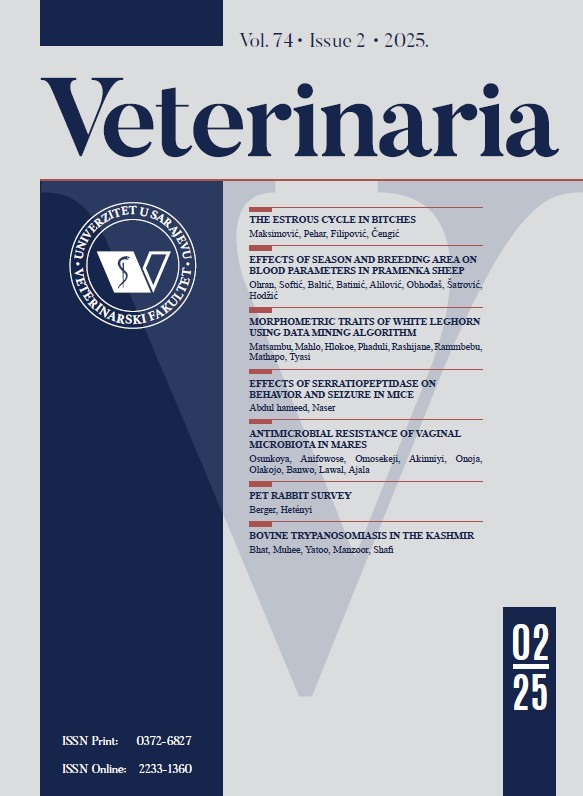Tuberculosis
Keywords:
Tuberculosis, pathogenesis, immunityAbstract
Tuberculosis, known as the "White Plague" in the early 19th century, is the infectious disease, which is being researched today even in some of the most developed countries in the world. Epidemiological- epizootiological research points to the importance of pasteurizing milk as well as the transmission in aerosolized droplets in humans and animals. Mycobacterium tuberculosis (Mtb), M. bovis, M. africanum and M. microti are the mycobacteria that cause tuberculosis. Other mycobacteria cause diseases commonly known as mycobacteriosae. Pathogenesis of tuberculosis includes both hostrelated and mycobacterium-related factors (virulence). Mtb acts through the expression of various genes and their proteins that are detectable in the serums of the diseased only, proving these proteins are formed in the course of the disease. In humans, a diagnosis is established by the detection of antigens (and antibodies), and in animals, with the allergy tests. As far as the bovine tuberculosis is concerned, the combination of skin tuberculin and blood gamma interferon test is recommended. Sequential genome (Mtb) analysis has given the basis for further research of the new vaccines.
Downloads
Published
How to Cite
Issue
Section
License
Copyright (c) 2020 Tarik Bajrović, Mahmud Nurkić, Šukrija Zvizdić

This work is licensed under a Creative Commons Attribution 4.0 International License.







